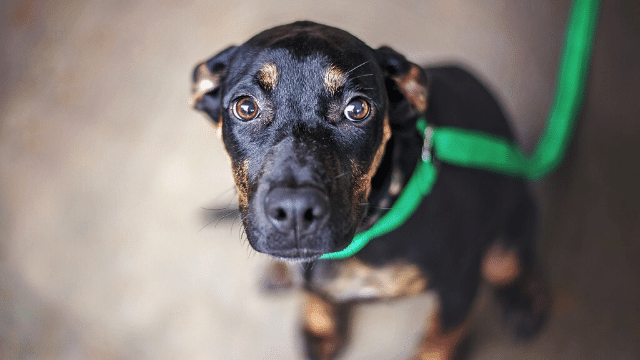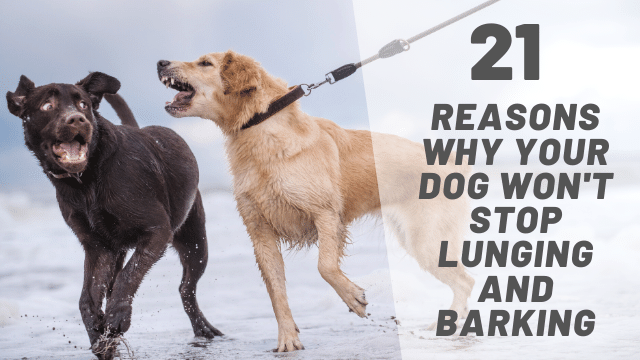
[Episode 07] Feelings & Fears
Why is my dog afraid of other dogs? Why does he bark at my neighbors? Should I bring him to the dog bark, and expose him to more people or dogs?
You are not the only person to think that merely exposing your dog will help him get used to what he is frightened of. It’s a common mistake and it can more your dog worse, and even aggressive or bite.
Here’s a human example to help you understand. If you’re afraid of spiders, do you think that you’d be less afraid if I put TEN spiders in your hand so that you could “get use” to them?
In this episode of the Naughty Dog Podcast, you’ll learn:
- How feelings and fears start
- Why collars that poke, shock, or cause pain create problems
- What science based dog training means
- And, what most uneducated dog trainers miss when explaining how your dog learns
Leave me a comment, or send me a DM on instagram @allabouttrainingdogs, and let me know what common misconceptions you’ve heard about dog training.
Feelings and Fears in Dog
If you are like most people, you may believe that fear in dogs is caused by abuse. Today, you’re going to learn the right information so that you can have a well-behaved dog and truly understand the reasons your dog may be growling, barking, lunging, or snapping at other dogs, people, or anything.
Behind every feeling and fear your dog has, an experience has triggered his feeling. For example, if your dog looks at a table, and nothing happens, he’ll think the table is neutral. Now, if he looks the table, finds something yummy he will have a positive experience and form a positive association. If your dog looks at the table and a loud noise happens, at the same time and it frightens your dog, and he jumps back. He will form a negative experience with the table or a negative association. This is important because negative association teach your dog that something is dangerous. When your dog thinks that something is dangerous, he will respond by barking, lunging, biting, snapping and growling.
If you can recall from our previous episode of Naughty Dog, your dog was born 80% curious and 20% fearful. But, as he ages and experiences more, he becomes 20% curious, and 80% fearful. This is why I cannot stress how important it is to help your dog have more positive experiences.
Dogs Learn by Association
When dogs learn by association, they for an emotional response with whatever they are looking at or what is in their immediate environment. The emotion response your dog forms will be one of these three,
- Safe
- Dangerous (not safe)
- Neutral
Dog’s don’t like or dislike something, they think it is either safe, dangerous or neutral. This is important if you want to change your dog.
When you catch yourself saying, “my dog hates the car” or “my dog hates Huskies” or “my dog hates the vet’s office” then you know a negative association has occurred. The vet’s office is a great example, because you probably only take your dog there when he doesn’t feel good, when he’s in pain or when he needs his shots. It’s the same reason why we (humans) avoid going to the dentist – because we walk out in pain.
In this episode of the Naughty Dog Podcast, I break down the importance of positive experiences, and which of these responses are the default in your fur-child.
Science-Based Dog Training
Associative Learn is one part of science-based dog training. In fact, it’s the part that most dog trainers don’t know about. They talk about Operant Conditioning, but they forget, or don’t even know how your dog forms his feelling, fears and excitement.
I see a lot of dog trainers saying that they are “science-based” trainer, but don’t let this fool you, ALL dog training is based on science. And that means that there’s an exact recipe to solve all of your problems!
Have you ever heard of Pavlov’s Dogs? Yes, that is from Nobel Prize winner, Ivan Pavlov, the scientist who discovered associative learning. He was studying salivation in dogs. In his experiment, he had his lab assistants wearing white lab coats bring the dogs food and would measure the salivation in the dogs. However, the dogs then began to pain the lab coats with food and would salivate when the saw the lab assistants in white coats, whether they had food or not.
This was an important find, and shows just how powerful association can be formed. It is powerful enough to stimulate an unconscious response (salivating) even without the presence of the original stimuli.
The Human Equivalent
Dogs are not the only ones who learn via associative learning. You only need to have one painful tooth pulled, and now you hate the dentist because you pair that experience with the next experience at the dentist. You learn, going to the dentist will cause pain. Does that sound familiar to you now when you say, my dog hates the vet. You are not that different from your four-legged best friend. Now you know how feelings and fears start so that you can prevent any future negative experience.
I know that if you’re listening to this podcast, you’re a good dog owner, and I love that about you. Leave me a comment and let me know what you learned from this episode of The Naught Dog Podcast.
EPISODE BREAKDOWN
2:03 – 3:30 – Common misconceptions
3:37 – 9:00 – Ways dogs learn
9:24 – 16:40 – Science-based dog training
16:43 – 20:50 – 3 parts of associative learning
20:55 – 23:55 – Human equivalent of associative learning
CONNECT WITH ME
FACEBOOK: www.facebook.com/AllAboutTrainingDogs/








